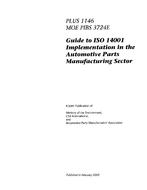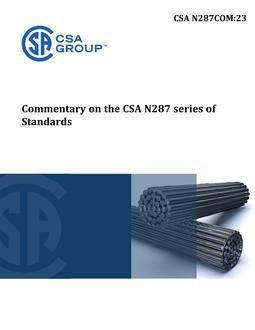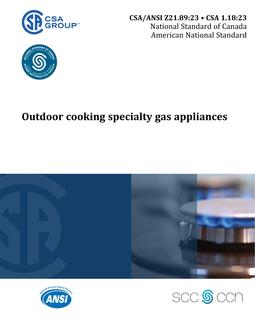
CSA PLUS 1146 (1st ed. pub 2000)
- Comments Off on CSA PLUS 1146 (1st ed. pub 2000)
- CSA
Click here to purchase
1. Scope
1.1
General This Guide provides direction on policy development; identifies common activities, aspects, and impacts; provides sample objectives and targets; identifies typical training requirements; and contains a checklist to track progress. Although each facility has its own configuration that makes it unique, any organization that manufactures automotive parts should fi nd sections of this Guide helpful in establishing its own environmental management system (EMS).
This Guide has been developed in consultation with the APMA and member companies to ensure that it focuses on the priorities and needs of the APM sector.
Although this Guide attempts to be as comprehensive as possible, ISO Standards 14001 and 14004 should also be consulted.
1.2
Structure The main topics of this Guide are as follows: (a) Section 2 provides definitions of key terms used in ISO 14001 and its implementation; (b) Section 3 presents the issues raised at the APMA focus group and discusses issues of primary concern, including the background of the ISO 14000 series, the issue of regulatory compliance versus voluntary conformance, and the relationship between I SO 14001 and ISO 9000 (QS 9000); (c) Section 4 discusses the steps involved in implementation, as well as the cost and schedule typically involved; (d) Section 5 provides a description of a gap analysis and purpose, and provides guidance on how to use a gap analysis to develop an action plan to implement ISO 14001; (e) Section 6 provides a description of the main elements required in an environmental policy. A sample policy is also provided; (f) Section 7 provides a discussion of environmental aspects and impacts, legal requirements, and objectives and targets, and provides gu idance on how to set up an environmental management program; (g) Section 8 provides details on the implementation of an ISO 14001 program, setting up an environmental management structure, training requirements, documentation requirements, communication, cont rol procedures for significant environmental impacts, and requirements for emergency preparedness and prevention; (h) Section 9 provides a system for ensuring that the EMS is monitored and that any required corrective action is identified and implemented; (i) Section 10 offers a summary of the requirements for senior mana gement review of the EMS; and (j) Appendices A-C provide an annotated compilation of other publications and information sources for use in implementing an ISO 14001 program.
1.3
Coordination with ISO Standard 14001 This Guide is structured to follow the general requirements, as well as the five key elements of an EMS, as defined in ISO 14001. Sections 6-10 deal with each element in turn: (a) environmental policy (ISO 14001, Section 4.2); (b) planning (ISO 14001, Section 4.3); (c) implementation and operation (ISO 14001, Section 4.4); (d) checking and corrective action (ISO 14001, Section 4.5); and (e) management review (ISO 14001, Section 4.6).
Product Details
- Published:
- 06/12/2000
- Number of Pages:
- 83
- File Size:
- 1 file , 3.8 MB



